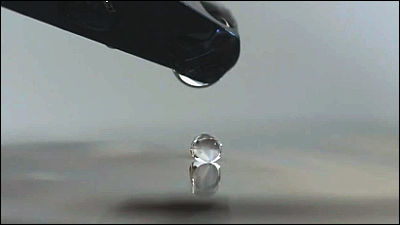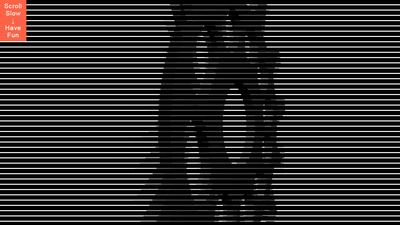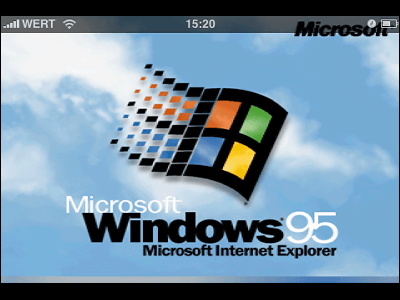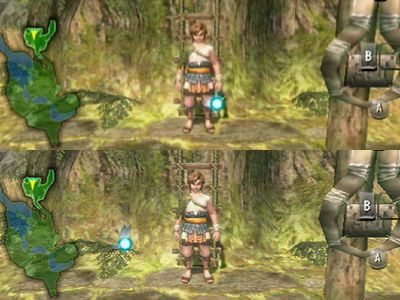What does it look like when you shoot a picture of a CRT TV with a super slow?

Many people know that the mechanism to reproduce the images on which television and movies are moving is switching the still images quickly and continuously. Human eyes can no longer perceive the switch because the speed is 24 times or 30 times per second, and more than 60 times on television in recent years. However, even if it is impossible with human eyes, by using a machine, it should be able to observe the situation well, so we have released movies of a number of super slow moviesThe Slow Mo GuysI am clarifying how the television projects images by super high-speed shooting of 380,000 frames per second.
How a TV Works in Slow Motion - The Slow Mo Guys - YouTube
Gavin of The Slow Mo Guys appeared SONY 85 inch 4K liquid crystal TV in front. However, this TV is not used for this shooting ... ...
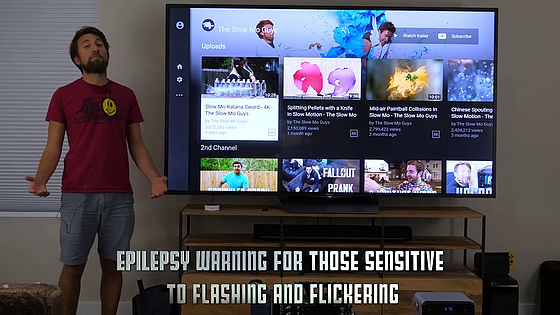
This small TV. It is now a threatening cathode ray tube TV, the size is probably 14 inches from the external view.
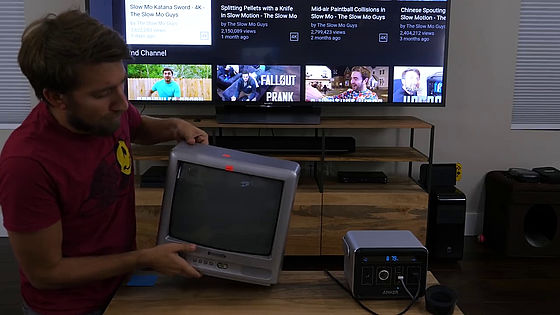
When you turn on the power, white and black noise on the screen, so-called "A sandstormIt appeared. The dark parts move from the top to the bottom, but because the drawing cycle of the TV and the shutter speed of the camera are not synchronized.
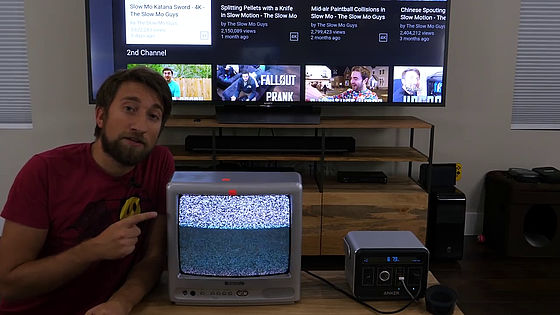
If you take a sandstorm at a shutter speed of 1600 frames per second (1600 fps), you can see that a thin sandstorm belt flows from top to bottom like this. this isScan lineThis is a line of light called a line of light called a screen line in the cathode ray tube television screen 30 times a second down the screen from the top to display the image.
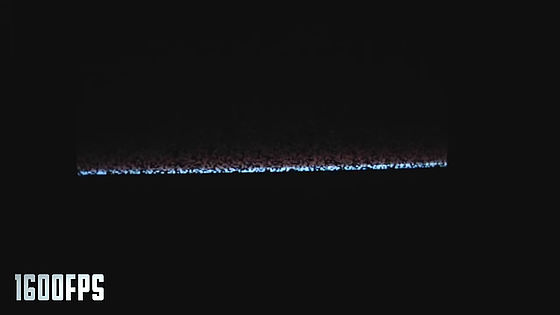
Then, what will it be like when displaying real video content? I played the game "Super Mario Bros." that appeared in the cathode ray tube TV era and shoot the situation.
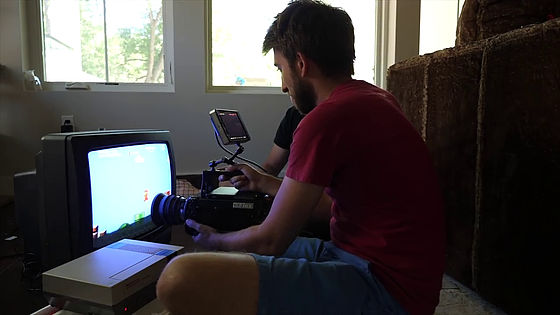
It is like this when shooting the screen at 2500 fps. As in the case of sandstorms, only a part of the screen is brightened like a band, but it is interesting that the Mario's face can be recognized properly.

Mario just before killing Kuribo and dying. If you look at the movie, you can see how the light of the line through which the scan line passed gradually disappears, but this is because the "phosphor" painted inside it slowly disappears to emit light. However, the actual disappearance speed should be on the order of a few milliseconds.
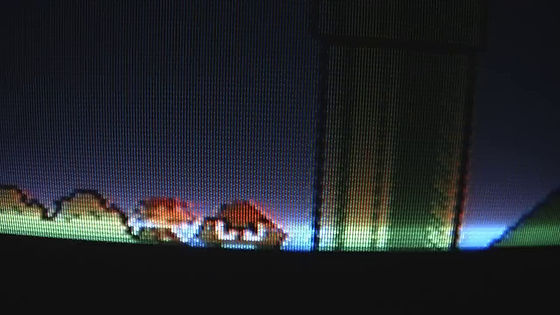
Furthermore, if you increase the camera frame rate to 28,500 fps, you can now see the tip of the scanning line moving quickly in the horizontal direction. Although there is no way to check only by watching the movie, you can see that the scanning line moves fast from left to right and superbly projects the image line by line.
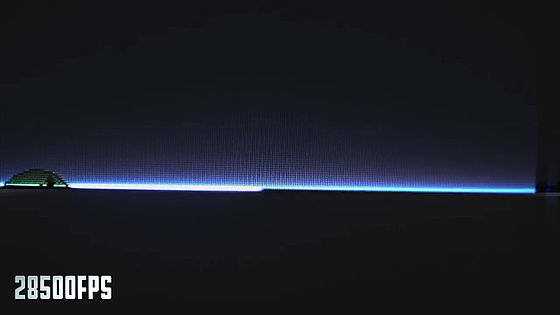
And the camera's highest frame rate, "380, 117 fps" was taken in the state. It was an image showing that the scanning line was drawn at a furious speed while drawing each one of the dots.
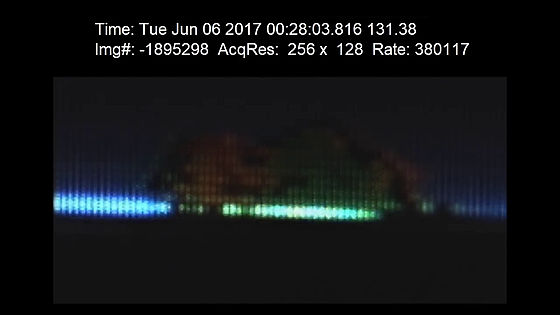
Next, Mr. Gavin is taking a picture of the 4K liquid crystal television in the same manner as super slow.
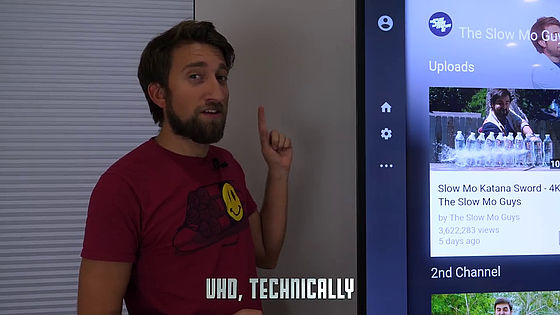
It looks like I took a startup screen of the game machine "Xbox 360" with a super slow. Screen lines like cathode ray tubes are not displayed on the screen, you can see that the whole screen is displaying the image. On the other hand, when the screen changes, you can also see how it switches from top to bottom. That is, the point that the LCD TV always displays the whole screen is largely different from that of the CRT TV, but the rewriting of the screen itself is done from the top to the bottom in the same way.
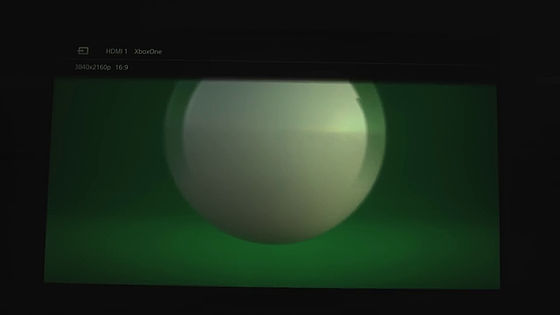
This is the same as drawing on smartphone screen. When you shoot at high speed shooting how to swipe the iPhone's home screen, you can see how the icon displayed on the screen is drawn sequentially from the top of the screen as "Kakkakuku". In recent years smartphone screens such as the iPhone and others move smoothly as "Nurru", but in fact it is clear that you are actually doing such fine movements at super high speed.
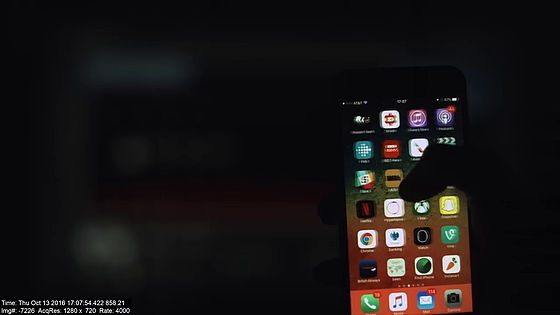
In the case of the iPhone, it is also interesting that the drawing direction of the screen is divided into "top to bottom" and "right to left" depending on the model.
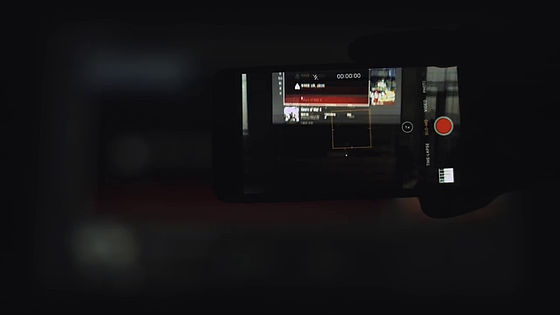
Finally, Ms. Gavin photographed the appearance of a dot close to the screen. Even on such a screen that black characters are projected on white back ......
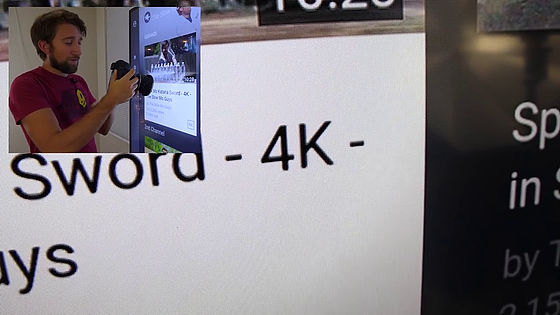
In fact, you can see that all three colors are expressed as "red, green, blue". And it is also interesting that it is not "black character" on the screen, but "white background" on the contrary.
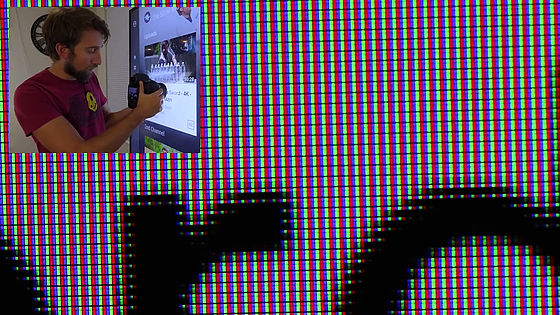
Changing the lens and further enlarging the dot it looks something like this. I can understand that the dot of the liquid crystal television which can not almost be recognized with the naked eye actually becomes such a thing.
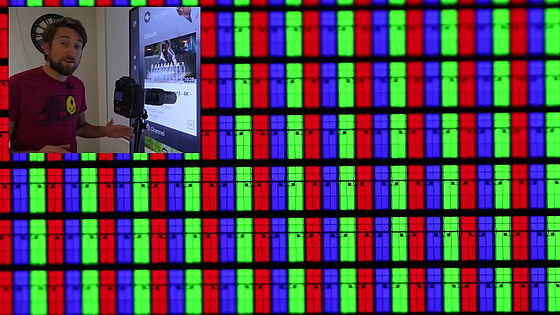
Moreover, this dot has an aspect ratio of about 3: 1, and it is surprising that each is divided into two. This is a mechanism to increase the number of colors that can be reproduced by reducing the degree of brightness of each dot.
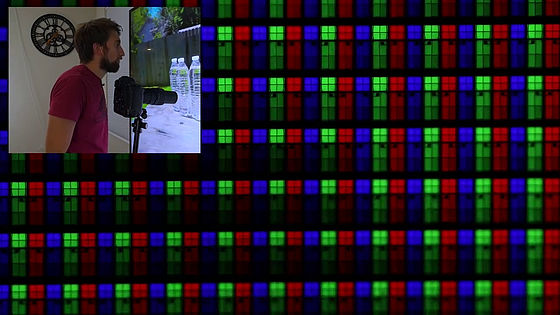
By the way it looks like this when enlarging the dot of the CRT. At the same time it can be seen that the shape of the dot is totally different, and at the same time it is clearly understood that the CRT TV displayed by analog control can not expect high definition like LCD TV or organic EL television.
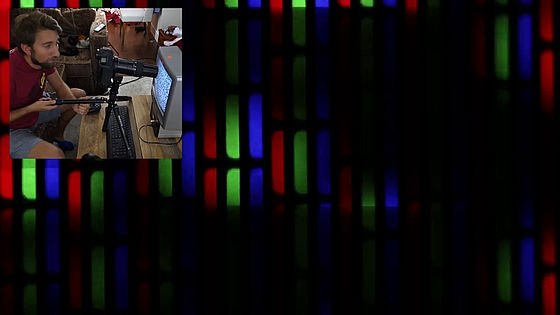
However, LCD TVs also have weaknesses. One of them is the problem of leakage of light from the backlight. In terms of its structure, the liquid crystal television is required to irradiate pure white light from the back, but in that case it can not completely shut out the light, so that the part to be rendered black can not be blacked out Weak point there is. In the upper model of each maker, the ingenuity is tried to submerge black deeply by controlling the light source of the backlight finely, but even if it looks closely it still seems to be slightly even in the black part as in the following image You can see that light is coming out.
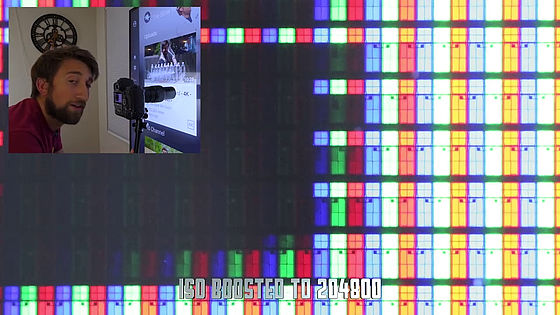
At the moment we can solve this problem only "organic EL television (OLED)" has no choice. OLED has the structural strength that light leakage does not exist in the first place because back light is unnecessary because each dot self-shines. In the same way as this, as a self-luminous type display, "Plasma TV" which can not be seen now can be cited. Actually, CRT televisions are also classified as self-luminous type.
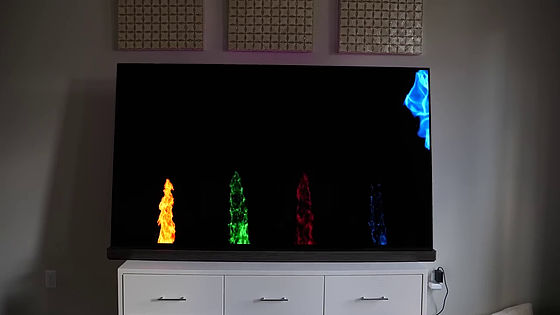
When I expand the dot of the organic EL television, it looks like this. Because of the shooting method or the screen is somewhat fuzzy, coloring is also difficult to understand, but you can see that very small dots are lined up in order. Even so, it is interesting that only red dots have small area. It is probably because it adjusts the brightness of each color by the area, but it is interesting to see such things as it grows bigger.
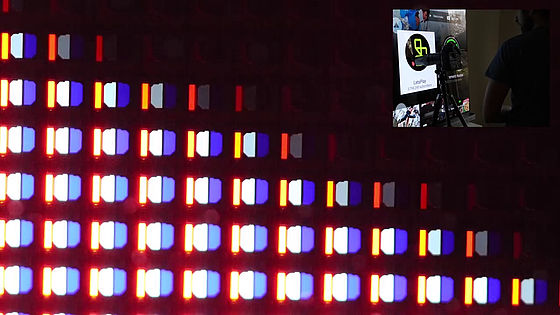
Related Posts:

